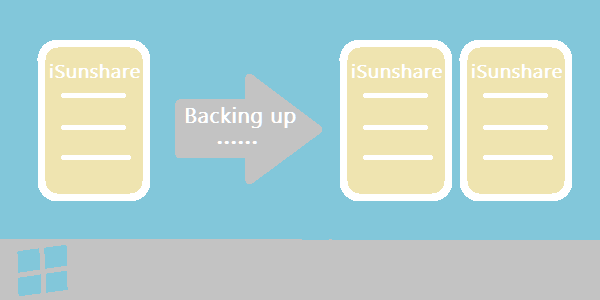
- #RIGHT BACKUP COMPUTER PROGRAM HOW TO#
- #RIGHT BACKUP COMPUTER PROGRAM FULL#
- #RIGHT BACKUP COMPUTER PROGRAM WINDOWS 10#
- #RIGHT BACKUP COMPUTER PROGRAM PC#
You will need a huge backup destination drive to pull this off: typically, an external hard drive or your own home network storage option.
#RIGHT BACKUP COMPUTER PROGRAM FULL#
Your best option is to do a full disk-image backup on a regular basis, with data included, using software that can read images and selectively pull files for restoration when necessary. To clarify: Yes, you should have two sets of backups running. That data should be backed up separately. Keep in mind, however, that this is similar to going back to the factory settings, though you've chosen the point to revert to, so the restoration will not include data accumulated after the original imaging. Then, if it starts acting wonky, you can revert the drive to its original settings. When used for restoration, the clone overwrites the existing system, and the hard drive reverts to the state it was in at the time of backup.Ĭloning is a great way to back up a brand-new computer. It's a true snapshot of the drive at the moment of backup. A clone is a replica of all of your data-every file and folder, even the programs and system files. This way, you get everything even if you don't need it, but it's easy to keep up to date and restore specific files as needed.Ī better method, though, is to make an image or clone of the drive. The first is to use software to copy all the individual files from the drive to another (larger) drive, as described above. There are several ways to back up an entire hard drive. (Opens in a new window) See all (8 items)
#RIGHT BACKUP COMPUTER PROGRAM WINDOWS 10#
Windows 10 and Windows 11 can also back up files to OneDrive, Microsoft's online backup and synchronization offering (more on that below). File History is easy to set up, but it's limited in scope.

Then, you can restore only the version of a file you need to recover, when necessary. It lets you back up items using the File History, which offers recurring copying of files (from every 10 minutes to every day) to a secondary drive. Go to Settings > Update & Security > Backup (Opens in a new window). There's plenty of free software to take care of this for you, including built-in Windows features. You need at least two copies.) To be safe, back up entire folders on a recurring basis to ensure that newly created or updated files are backed up. (Simply moving a file isn't backing it up. If you need to back up specific data only, use software that lets you choose which files you want to save. But your needs for redundancy, security, and access dictate what kind of backup you should use. Here's a quick look at the types of backup available, as well as the tools you'll need to pull it off with as little work as possible.īacking up can be as simple as copying a file from one spot to another-from a hard drive to a removable USB flash drive, for example. At least one in five people have never backed up their data (according to the World Backup Day website). The most likely reason is that backing up takes some effort. Computers can become infected, and accidents happen-but even after losing important documents, irreplaceable photos, or entire sets of financial records, most of us still don't back up. Redundancy, people, redundancy!Īs the organizers of World Backup Day (Opens in a new window) note, people produce quadrillions of files every year, but so many fail to take adequate steps to preserve their data. But one copy of a file on your computer does not a backup make. We all know we're supposed to back up our data it's essential for peace of mind.
#RIGHT BACKUP COMPUTER PROGRAM HOW TO#
#RIGHT BACKUP COMPUTER PROGRAM PC#
How to Record the Screen on Your Windows PC or Mac.How to Convert YouTube Videos to MP3 Files.How to Save Money on Your Cell Phone Bill.How to Free Up Space on Your iPhone or iPad.How to Block Robotexts and Spam Messages.


 0 kommentar(er)
0 kommentar(er)
